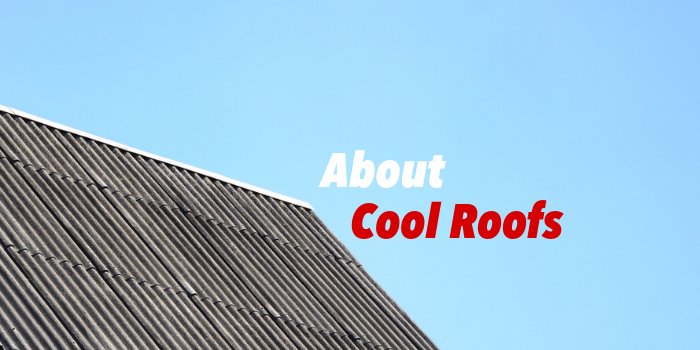You’re probably already familiar with the way dark colors absorb heat and light colors reflect it. That’s why you’ll wear a white t-shirt on a hot day, or choose to buy a white car instead of a dark blue one if you live in a warm area. But, have you considered ways to mitigate the amount of heat absorbed by the roofs of the homes in your association? Summer is on its way, so this is a great time to start thinking of ways to stay cool!
We know that not everyone (nor every association) wants a white roof. However, with the multitudes of options available today for “cool roofs,” we’re sure that you can find a solution that works for homeowners’ budgets and your community aesthetic! Join us as we go over the what, how, and why of heat-reflective roofing.
What is a “cool roof”
A cool roof is either covered with or constructed from material designed to reflect the sun’s radiation. Most popular in areas where temperatures reach scorching highs, but don’t drop to freezing lows, cool roofs save homeowners and companies money on air conditioning costs.
It is unclear whether cool roofs fall under the category of solar-based energy saving technology protected by law. While many states, such as California, Arizona, Texas, and Florida, have solar access laws that prevent HOAs from prohibiting solar energy devices or measures, these may or may not apply to cool roofing materials. It’s best to review your state statutes for applicable laws.
Roofs can be made “cool” in several different ways. First, a roof could be made of a naturally cooling material, such as metal or ceramic tile. Or, the roof could be painted white or with solar-reflective paint, which comes in a variety of light and dark-colored hues (note: the lighter colors are still more effective). Special radiation-blocking coatings can also be applied to the inside of the roof, or a protective membrane can cover the surface of the roof.
We understand that some of these options probably don’t follow the standards set forth in your community’s CC&Rs. However, many roofing companies also offer special energy-saving asphalt shingles that are specifically designed to keep homes cool. These come in a variety of colors, as the solar-reflective paints do, but remember that the darker the color, the less heat the shingles will reflect.
Why are cool roofs worth installing?
The biggest benefits of installing a cool roof include personal savings on electric bills during the hot summer months (or, if you live in Texas or Arizona, the hot spring, summer, and fall months) and the positive impact this form of natural cooling has on the environment. If less electricity is needed to cool homes, energy companies will need to produce less. Additionally, the “heat island” effect will be mitigated in communities with many cool roofs. The cooler each individual house, the cooler the community will be overall.
What will installing a cool roof cost our homeowners?
Depending on the type of material and method chosen, installing a cool roof can either be fairly expensive or priced comparatively with the installation of non-cooling roofing material. The most effective materials can be the most expensive, such as metallic solar-reflective paints. Other brands of solar-reflective paints, as well energy-saving asphalt shingles, are priced similarly to traditional paints and shingles. Metal roofing is one of the most effective cooling materials, but it is more expensive (for materials and installation) than asphalt shingles. Tile roofs are also fairly more expensive than asphalt shingles.
What are the cons of cool roofs?
The main cons to installing a cool roof include the more limited selection of colors and materials, the high costs of certain methods and materials, and the higher home heating costs during the winter. Additionally, homeowners should keep in mind that applying certain cool roof coatings and paints to current roofing materials may void warranties.
However, to combat these cons, some energy companies and local government programs offer rebates to homeowners who install cool roofs. And, while heating costs increase for homeowners with cool roofs, depending on the temperature variation in your area, going cool might be more efficient overall.
For an in-depth overview of the pros and cons of cool roofs, please see the U.S. Environmental Protection Agency’s Reducing Urban Heat Islands: Compendium of Strategies. This document includes detailed explanations of how cool roofs work, information on rebate programs, research on the effectiveness of cool roofing materials, and more.
Depending on the unique needs of your community and homeowners, cool roofs may be a great solution to an overheated neighborhood. We hope this article has given you the start you need to research how cool roofs can benefit your community. Stay cool, and don’t forget to join us for next week’s refreshing installment HOA property management tips!







